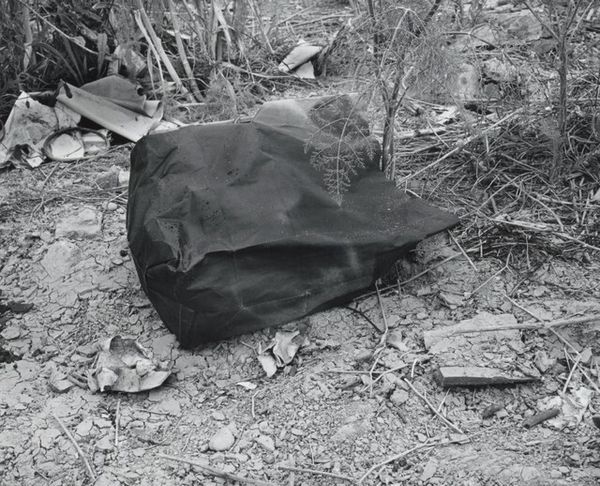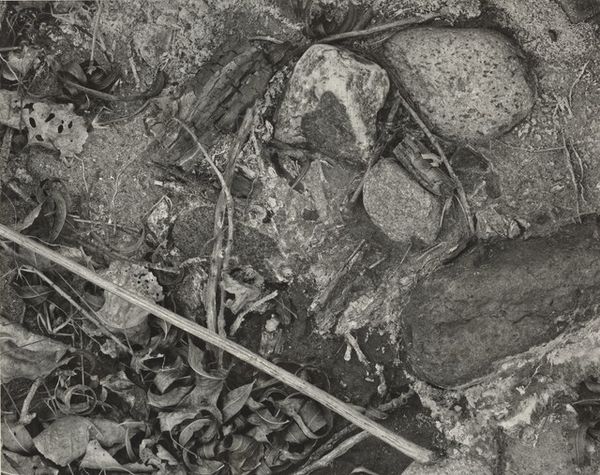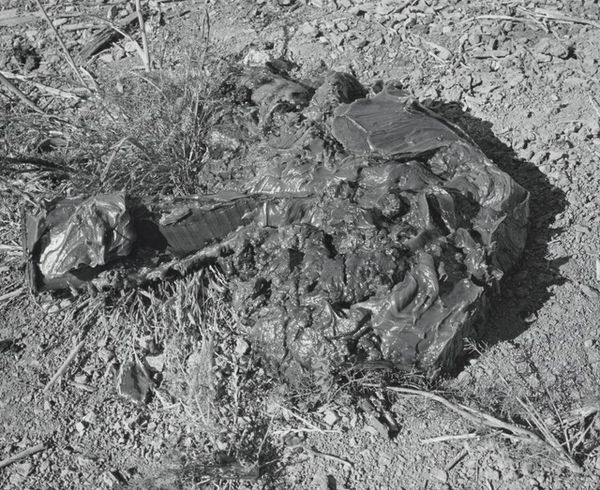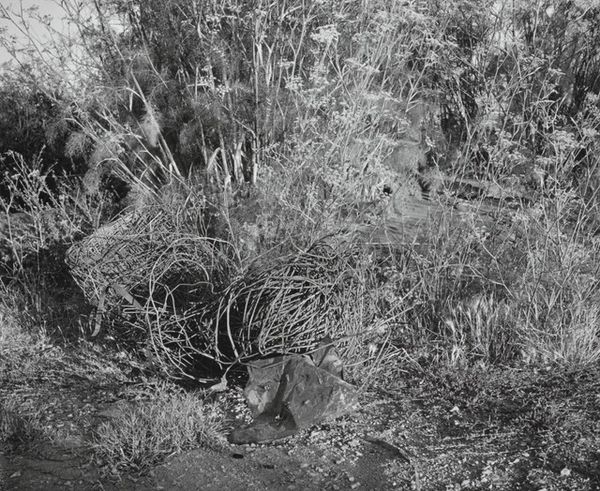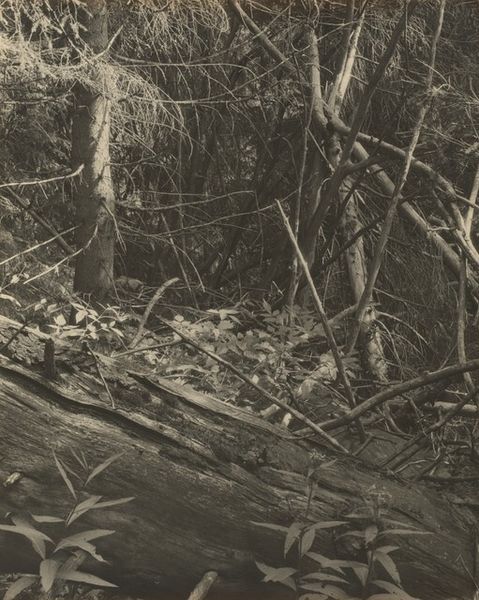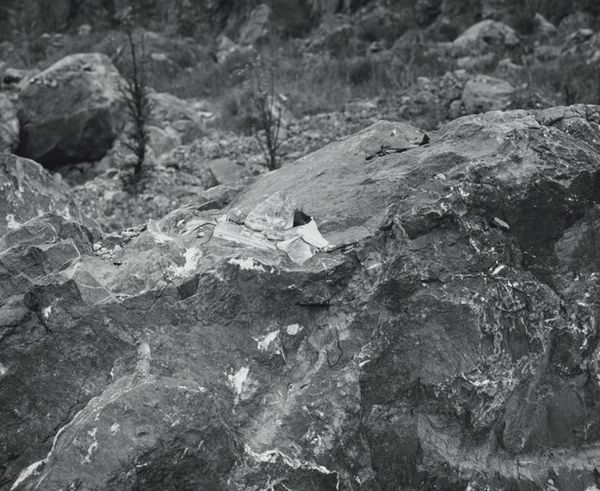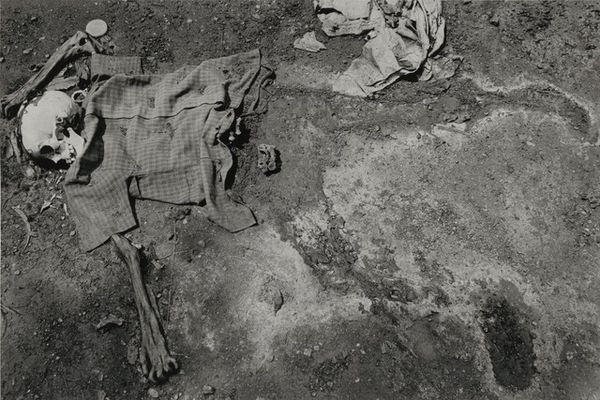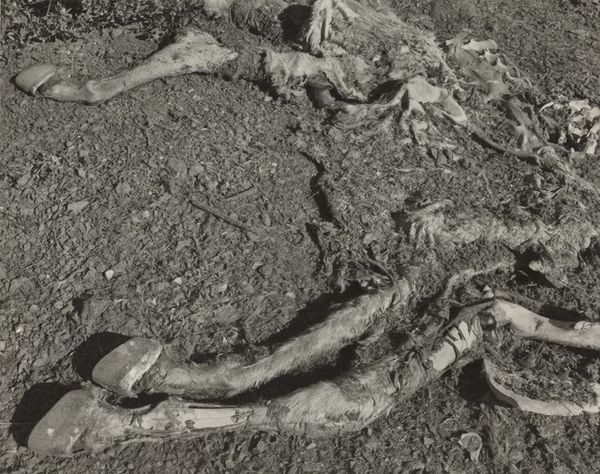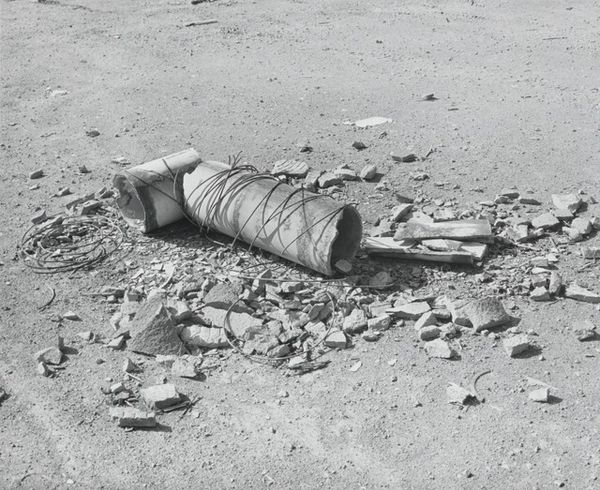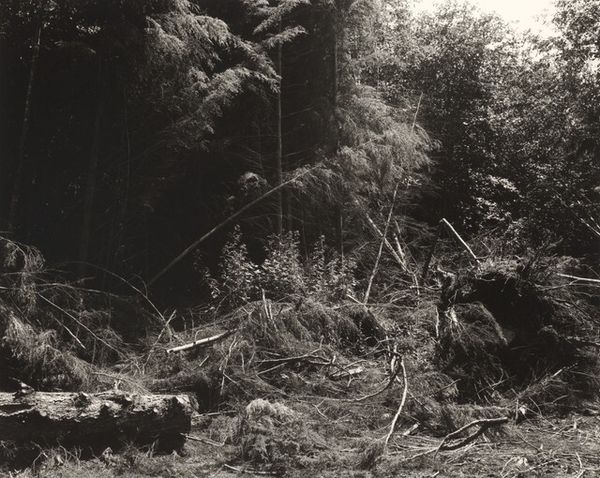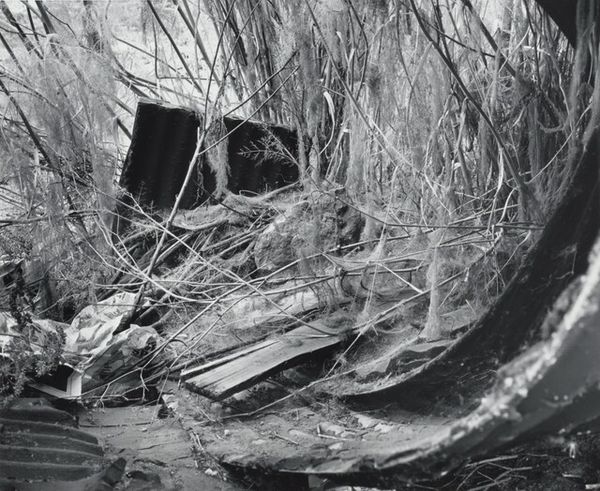
collage, photography, gelatin-silver-print
#
collage
#
conceptual-art
#
postmodernism
#
landscape
#
photography
#
environmental-art
#
gelatin-silver-print
#
realism
Dimensions: image: 18.8 × 22.9 cm (7 3/8 × 9 in.) sheet: 20.32 × 25.4 cm (8 × 10 in.)
Copyright: National Gallery of Art: CC0 1.0
Curator: Here we have Lewis Baltz's "San Quentin Point, no. 10A," a gelatin silver print from around 1982 to 1985. What's grabbing you right off the bat about this one? Editor: My gut reaction? Mess. Utter mess, but somehow...compelling? It’s just this heap of trash, paint cans, what looks like construction debris, and scrubby vegetation all crammed together. There's something darkly beautiful about this disorder. Curator: Right, that tension is key. Baltz was deeply invested in landscapes altered, or rather scarred, by human intervention. His lens critically examines how spaces are used and abused, reflecting larger socio-political structures. It’s not just about the environment; it’s about the power dynamics that shape our relationship with it. Editor: I see what you mean. It's more than just litter; it's a record. Like a archaeological dig site, but for contemporary failings. Makes you wonder, what narratives can you piece together from these discarded objects? Curator: Exactly! Conceptualism and postmodernism come into play here. He is interested in questioning ideas of beauty, the role of the artist, even photography's truth-telling abilities, which makes the location around San Quentin prison really stick. Editor: It does hit hard, seeing this waste literally in the shadow of incarceration. The desolation gets a deeper read in light of environmental racism, where marginalized communities often shoulder a heavier burden of pollution and ecological damage. And of course prisons, which always disproportionately incarcerate poor people of color, often occupy toxic landscapes. What at first might look like simple artistic choice grows heavier! Curator: Yes! These environmental concerns intersect powerfully with issues of race, class, and justice. Baltz highlights uncomfortable realities rather than offering idyllic vistas, pushing us to consider who profits and who suffers from environmental degradation. Editor: Definitely. There’s an unnerving intimacy in this seemingly detached photographic style. It invites me to inspect the ruins carefully as I try to extract myself from a society so full of this kind of blight. Curator: It feels vital that we reckon with the less picturesque sides of progress and its impacts on all communities involved. It's a good work, precisely for its disquiet. Editor: Totally agree. A portrait of discomfort; forcing me to reconcile with our complicity, even unwilling, in systems that generate this garbage, both literally and metaphorically. Thanks for steering us through it!
Comments
No comments
Be the first to comment and join the conversation on the ultimate creative platform.
